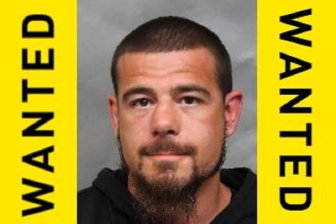Mohammed Idriss says the small city of Brooks in southern Alberta will get more isolated when Greyhound bus service ends across Western Canada in the fall.

Greyhound has announced it will end all its routes in the West, save for one between Vancouver and Seattle, at the end of October.
READ MORE: Greyhound Canada to end routes in Prairies, B.C.
Brooks, with a population of about 14,450 is on the Trans-Canada Highway, but it’s 190 kilometres to Calgary toward the west and 110 kilometres to Medicine Hat in the east.
“We already feel cut off to a degree because of the availability of some services in the big city only,” said Idriss, manager of Brooks and County Immigration Services.
A large population of newcomers to Canada work in Brooks, about 90 per cent of them at a beef-processing facility owned by JBS Canada.
Idriss estimates about 1,000 people moved to the community to work and many find getting out of town difficult.
“There are people who have vehicles, but are not that comfortable going into a big city with their own vehicle, and they would just prefer taking public transportation,” he said.
“I can’t give a good estimate of how big the impact will be, but we’re going to hear more once people start realizing there is no service any more.”
READ MORE: Is public transportation a human right? How to fill Greyhound’s gap
Watch below: People living in rural communities across western Canada are asking some tough questions after Greyhound decided to end service this fall. As Tom Vernon explains, many communities rely on the line as a link to larger centres.

Brooks Mayor Barry Morishita is disappointed with Greyhound’s decision.
“I was on a Greyhound last night coming back from Calgary. It’s funny I was on one the day the news came out.
“It’s going to have an impact on a number of people.”
The loss of Greyhound is also a concern to Canada’s largest reserve. The sprawling Blood Indian Reserve in southwestern Alberta is home to 12,500 residents.
Band spokesman Rick Tailfeathers said service has been going downhill since Greyhound stopped service to Fort Macleod, just 30 kilometres away.
He said only about half of the band’s members own cars.
“The good thing about (Greyhound) was people could afford a bus ticket,” he said. “Now people are going to have to find another way to travel.”
In the north, bus service is relied on by many Indigenous people who travel to bigger cities for medical care.
“It is already well documented that our citizens have to ride the bus for hours, some longer than 14 hours, in order to see a doctor,” said Grand Chief Arlen Dumas of the Assembly of Manitoba Chiefs.
“How will they get access to adequate health care now?”
There were previous Greyhound cuts, such as in 2012, when the bus company stopped operating on a number of roads including Highway 2 in Manitoba.
READ MORE: What are the alternatives to Greyhound in Western Canada?
Rick Chrest, the mayor of Brandon, Man., said it’s a blow for people who don’t own vehicles because there is no rail service in many areas and access to passenger airlines is limited.
Chrest is hopeful smaller private operators will step in, but that didn’t happen after the 2012 cuts.
“This will take away yet another option for public transportation that certainly many people rely on,” Chrest said.
“We might be hopeful that some other aspect of the private sector may start stepping up and filling the void.”
Chrest pointed to a private firm that offers a shuttle bus that carries Brandon residents two hours east to the airport in Winnipeg. Brandon has an airport, but the only major scheduled service is a daily WestJet run to Calgary.
Bus charter companies, which transport sports teams, might also find a niche in regular scheduled service, he suggested.
READ MORE: Western Canada Greyhound withdrawal ‘to have implications for labour mobility’: Edmonton mayor
Ontario-based Kasper Transportation, which provides service to Northwest Ontario and Manitoba, announced expansion plans Tuesday.
In a Facebook post, it said it will be offering service from Winnipeg to Thunder Bay, Ont., Thompson, Man., Regina, Saskatoon and Prince Albert, Sask., starting Oct. 31 — the day Greyhound shuts down its western operation.
Greyhound currently services small communities across the sparsely populated Prairies. There are 46 stops alone during the 19-hour run from Winnipeg to Calgary _ places such as MacGregor, Man., Sintaluta, Sask. and Bassano, Alta.
LISTEN: Nicole Robertson of Muskwa Media joins Danielle Smith to discuss how the loss of Greyhound service affects Canada’s Indigenous communities








Comments